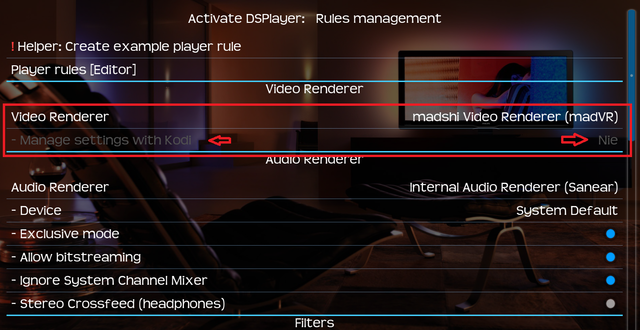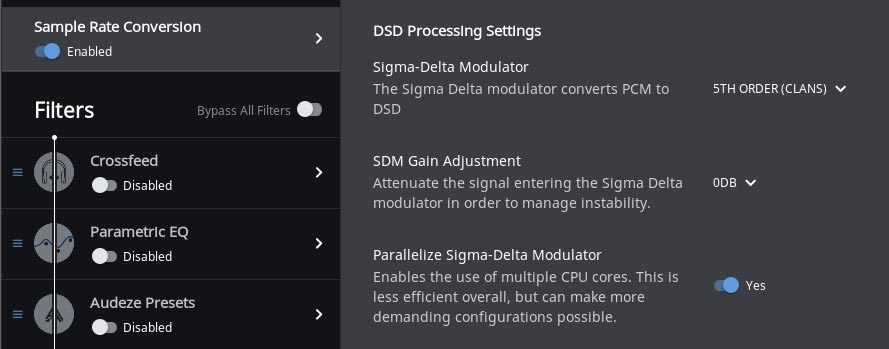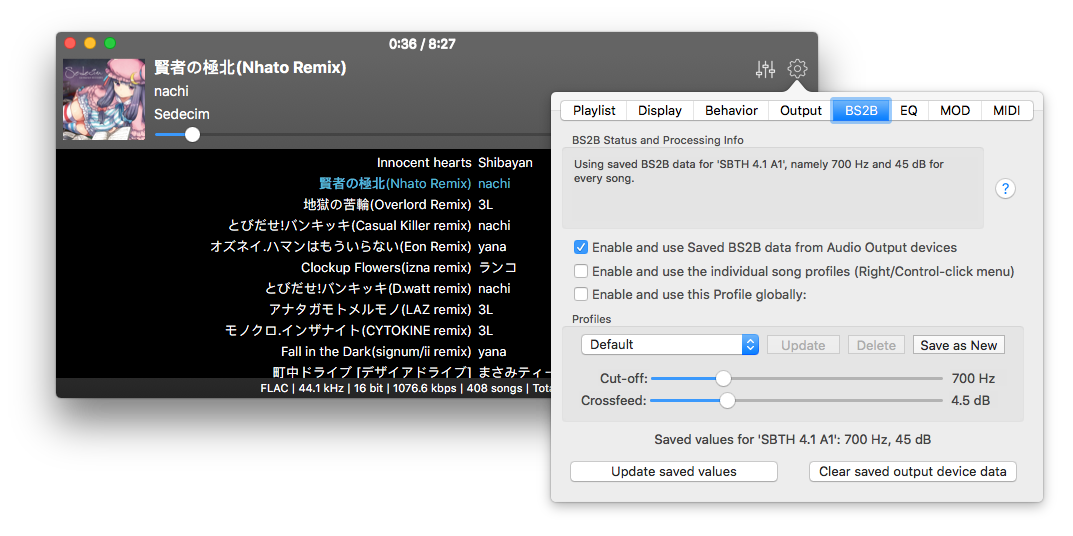

I soon found out that there was a problem in my system with these transfers producing a loud pop when switching tracks.
#Crossfeed kodi software
I started using Sonare’s ISO2DSD software to convert these ISO’s to.
#Crossfeed kodi iso
One advantage with JRMC over Kodi is that JRMC can handle these ISO files directly while Kodi can’t. I have about 25 SACD ISO files, some multichannel, some stereo. I’m using Tagscanner to tag all these rips. I’m using Exact Audio Copy (EAC) to rip stereo Redbook to flac. Any advise on handling music videos in Kodi would be welcome. They all need to be properly named or tagged and then brought into the Kodi library somehow. I haven’t tried doing a lot with these yet other than checking for correct playback. I started ripping music videos from the DVDA/V disks with makeMKV. Most of my multichannel music collection is DVDA/V of some type. I’m using DVDA Extractor to rip DVDA and DVDV disks to 24/96 flac. It seems they did finally fix the main bug where JRMC required a re-install if the NAS is powered down. I still keep track of the support page for JRMC in an effort to try and get more answers (here). My assumption is that JRMC needs a more powerful processor than the quad core Celeron in the QNAP.

Kodi does not seem to exhibit these problems. I’ve pretty much given up on using JRiver MC due to the problems it had processing multichannel audio due to buffering issues. I'm using the Kodi player and the QNAP TS-451+ server/NAS as described in the first post.
#Crossfeed kodi update
So I thought I’d provide an update on my newbie progress. (I’ve had to re-install 3x now).Ĭould it be that the performance issues I’m seeing are not due to underpowered CPU? Could it be that, at least some of the issues I’m seeing could be due to a poor adaptation of JRMC as it applies to the QNAP? Could the JRMC program itself be what is sapping up CPU resources? I’m going see what I can do to find the answer later today. As it is now, JRMC has to be uninstalled and then re-installed for it to run again after a shut down. Beyond the points I raised above, JRiver is currently working on a fix for a serious bug that prevents JRMC from re-starting if the NAS is powered down. JRMC cannot be controlled using that same remote. But the QNAP also accepts IR commands directly… hence the remote. I don’t think I ever mentioned this before. Not only does Kodi have a nice couch potato interface, but it is well controlled from the listening position using the little remote that was bundled with the QNAP, presumably for applications just like this. That forces one to either run JRMC from another network enabled device (which is what I’ve been doing), or resort to moving close enough to the display to actually read it to direct JRMC with a mouse/keyboard. JRiver’s 10 foot interface (Theater View) has been removed from JRMC for QNAP. Second, Kodi has a decent 10 foot interface.

I also want to look at the CPU/memory usage when running Kodi to see how it compares to running JRMC.
#Crossfeed kodi how to
I still need to play with this more to be sure I wasn’t hearing some down sampled version of the tracks I listened to, and I’m not sure yet how to handle SACD streams with Kodi. This is something I could not do when running JRMC with these same tracks. First, Kodi is able to make it through entire 24/96 5.1 flac tracks without issue. I only had to specify the output device, 5.1 output, and reload Kodi. Over lunch today I took 15 minutes and looked into it further. I installed it a few days ago but only did a quick look at the interface. And as I said previously, Kodi is another option for the QNAP since it is one of the available apps (as is PLEX). Thus far all of my experimentation with the NAS has been using JRiver Media Center for playback. Just a preliminary update, but interesting.


 0 kommentar(er)
0 kommentar(er)
